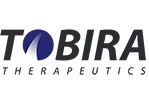预约演示
更新于:2025-05-07
CCR5 x CCR2
更新于:2025-05-07
关联
10
项与 CCR5 x CCR2 相关的药物作用机制 CCR2拮抗剂 [+1] |
非在研适应症 |
最高研发阶段临床3期 |
首次获批国家/地区- |
首次获批日期1800-01-20 |
作用机制 CCR2拮抗剂 [+2] |
最高研发阶段临床2期 |
首次获批国家/地区- |
首次获批日期1800-01-20 |
作用机制 CCR2拮抗剂 [+1] |
最高研发阶段临床2期 |
首次获批国家/地区- |
首次获批日期1800-01-20 |
50
项与 CCR5 x CCR2 相关的临床试验NCT05630885
A Limited-Center, Prospective, Double-Blind, Placebo-Controlled Study to Evaluate the Effects of Cenicriviroc Mesylate on Arterial Inflammation in People Living With HIV
The study is being conducted to determine if cenicriviroc mesylate (CVC) will decrease vascular inflammation as measured by 18F-fluorodeoxyglucose (FDG)-positron emission tomography (PET)/computed tomography (CT) imaging of the aorta.
开始日期2023-05-30 |
NCT04334915
A Multicenter, Prospective, Double-Blind, Placebo-Controlled Study to Evaluate the Effects of Cenicriviroc Mesylate on Arterial Inflammation in People Living With HIV
The purpose of this study is to evaluate the effects of cenicriviroc mesylate (CVC) on arterial inflammation in people living with HIV.
开始日期2022-11-22 |
NCT04593940
Randomized Master Protocol for Immune Modulators for Treating COVID-19
ACTIV-1 IM is a master protocol designed to evaluate multiple investigational agents for the treatment of moderately or severely ill patients infected with severe acute respiratory syndrome coronavirus 2 (SARS-CoV-2). The research objectives are to evaluate each agent with respect to speed of recovery, mortality, illness severity, and hospital resource utilization. Each agent will be evaluated as add-on therapy to the standard of care (SoC) in use at the local clinics, including remdesivir (provided). The SoC may change during the course of the study based on other research findings. Comparisons of the agents among themselves is not a research objective.
The study population corresponds to moderately and severely ill patients infected with the coronavirus disease 2019 (COVID-19) virus. Recruitment will target patients already hospitalized for treatment of COVID-19 infection as well as patients being treated for COVID-19 infection in Emergency Departments while waiting to be admitted to the hospital. Patients both in and out of the ICU are included in the study population.
The study population corresponds to moderately and severely ill patients infected with the coronavirus disease 2019 (COVID-19) virus. Recruitment will target patients already hospitalized for treatment of COVID-19 infection as well as patients being treated for COVID-19 infection in Emergency Departments while waiting to be admitted to the hospital. Patients both in and out of the ICU are included in the study population.
开始日期2020-10-15 |
申办/合作机构  Duke University Duke University [+2] |
100 项与 CCR5 x CCR2 相关的临床结果
登录后查看更多信息
100 项与 CCR5 x CCR2 相关的转化医学
登录后查看更多信息
0 项与 CCR5 x CCR2 相关的专利(医药)
登录后查看更多信息
1,030
项与 CCR5 x CCR2 相关的文献(医药)2025-07-01·European Journal of Medicinal Chemistry
Discovery and exploration of disubstituted [1,2,5]oxadiazolo-[3,4-b]pyrazines as novel C-C chemokine receptor type 5 signaling inhibitors targeting the intracellular allosteric binding pocket
Article
作者: Billen, Margaux ; Bulai, Radu-George ; Kaminski, Tim P ; Rocca, Edoardo ; Reynders, Sten ; Webster, Scott P ; Schols, Dominique ; Verwilst, Peter ; Lescrinier, Eveline ; Rozenski, Jef ; Homer, Natalie Z M ; Kleinboelting, Silke ; Claes, Sandra
2025-04-01·Journal of Chromatography B
Determination of disulfiram and diethyldithiocarbamate in plasma by high performance liquid chromatography with an electrochemical detection using a diamond electrode
Article
作者: Higashi, Kyohei ; Abe, Hiroko ; Tanabe, Naoaki ; Ohta, Arisa ; Terashima, Yuya ; Komeno, Masahiro ; Saitoh, Akiyoshi
2025-03-14·Journal of Leukocyte Biology
STING coordinates resolution of inflammation during wound repair by modulating macrophage trafficking through STAT3
Article
作者: Ju, Zhenyu ; Yin, Wenjing ; Zhou, Junyi ; Wu, Yanjun ; Huang, Yong ; Zhang, Weiguang ; Zhang, Xiaorong ; Chen, Cheng ; Yang, Jiacai ; He, Weifeng ; Hu, Wengang ; Liu, Zhihui ; Tang, Yuanyang ; Shang, Ruoyu ; Chen, Yunxia ; Luo, Gaoxing ; Cai, Xin ; Sheng, Hao ; Lu, Qudong
18
项与 CCR5 x CCR2 相关的新闻(医药)2025-03-27
·小药说药
-01-
引言
趋化因子是负责免疫细胞运输和淋巴组织发育的细胞因子亚家族。目前,据报道有50种不同的趋化因子,根据其主要蛋白质结构的前两个半胱氨酸(C)残基的位置,可分为四大类,即C、CC、CXC和CX3C趋化因子。
每个免疫细胞亚群都有不同的趋化因子受体表达模式,这使得它们对趋化因子有不同的反应,并根据每个环境的特殊需要迁移。在癌症中,它们在免疫细胞迁移到肿瘤中的模式中起着关键作用,从而形成肿瘤微环境的免疫特征,通常朝向促肿瘤形成状态。
此外,趋化因子可以直接靶向肿瘤微环境中的非免疫细胞,包括肿瘤细胞、基质细胞和血管内皮细胞。因此,趋化因子参与多种癌症发展过程,如血管生成、转移、癌细胞增殖、干性和侵袭性,是疾病进展的关键决定因素,对患者预后和治疗反应有很大影响。由于它们在癌细胞和免疫浸润细胞中重要的调节功能,使得趋化因子配体及其受体成为非常强大的治疗靶点。
-02-
一、趋化因子在肿瘤免疫中的作用
免疫逃避和免疫抑制细胞的募集
趋化因子在引导免疫细胞迁移中起着至关重要的作用,而免疫细胞迁移是启动和传递有效的抗肿瘤免疫反应所必需的。TME中的趋化因子分泌通常会发生改变,异常的趋化因子分布可促进免疫抑制的促肿瘤细胞(即Treg细胞、MDSC和TAM)分化和浸润到肿瘤中。
Treg细胞的趋化因子受体CCR4的表达高于其他CD4+T细胞,其响应CCL22,一种由TAM和原发肿瘤细胞产生的趋化因子。除了CCR4外,Treg细胞还可以表达其他能够介导其浸润TME的趋化因子受体,如CCR5或CCR10,其配体CCL28存在于TME的缺氧区域。
巨噬细胞主要通过CCL2–CCR2信号通路招募到TME中。CCL2的肿瘤表达与许多肿瘤中TAM的数量相关,并且通常与患者预后不良相关。与Treg细胞一样,TAM也可以抑制肿瘤相关抗原(TAA)特异性CD8+T细胞活化。与TAM非常相似,髓源性抑制细胞(MDSC)也可以通过CCL2–CCR2信号被招募到TEM中。此外,诱导单核细胞向肿瘤募集的其他趋化因子还有CCL5、CCL7、CCL15、CXCL8和CXCL12。
浆细胞样树突状细胞(pDC)是一种罕见的免疫细胞,也能抑制抗肿瘤免疫反应。肿瘤和基质细胞产生CXCL12,它是趋化因子受体CXCR4的配体,由pDCs表达。因此,CXCL12是pDC进入TME的关键分子。此外,CXCL12还对pDC发挥保护作用,防止其发生凋亡,延长其免疫抑制作用。
肿瘤生长与进展
一些研究表明,趋化因子信号系统通过不同的机制参与肿瘤生长和进展。癌细胞表达的趋化因子受体与肿瘤相关成纤维细胞、肿瘤细胞和TME浸润性免疫细胞分泌的各自配体之间的相互作用可直接激活PI3K/AKT和ERK 1/2等信号通路,导致癌细胞增殖。肿瘤细胞上趋化因子受体的病理性过度表达和TME中趋化因子配体的分泌可加剧这些效应。此外,趋化因子可以通过在肿瘤细胞中产生促凋亡和抗凋亡蛋白之间的失衡,例如下调Bcl-2表达或抑制caspase-3和caspase-9激活来维持癌细胞存活,从而避免肿瘤细胞凋亡。
某些免疫细胞的趋化因子募集也有助于肿瘤的发生。分泌IL-22的T辅助细胞(TH22)是TME中常见的免疫细胞亚群,已被证明通过多种途径支持肿瘤发生,特别是在结肠癌中。它们表达趋化因子受体CCR6,并向TME中存在的配体CCL20迁移,在那里它们能够通过细胞因子表达增加肿瘤细胞的干性和致瘤潜能。
血管生成
趋化因子及其各自的受体被认为是肿瘤血管系统的关键调节因子,在肿瘤血管生成中具有双重作用。
根据N端是否存在ELR(Glu-Leu-Arg)基序,CXC趋化因子可分为两类:ELR+趋化因子和ELR−趋化因子。通过激活CXCR1和CXCR2发挥作用的ELR+CXC趋化因子,包括CXCL1、CXCL2、CXCL3、CXCL5、CXCL6、CXCL7和CXCL8,具有血管生成作用。相反,ELR−CXC趋化因子,如CXCL4、CXCL9、CXCL10、CXCL11和CXCL14被认为是血管生成抑制剂。
趋化因子可以通过直接与内皮细胞上的趋化因子受体相互作用作为肿瘤血管生成介质,从而改善迁移和增殖以及内皮细胞存活。此外,趋化因子还可能通过促进TME中产生血管生成因子的白细胞的募集间接发挥作用,从而增强血管生成。趋化因子还可以与其他血管生成促进剂协同作用,如血管内皮生长因子(VEGF)。
另一方面,趋化因子还具有抑制肿瘤血管生成和内皮细胞增殖的活性。例如,CXCL4和CXCL10是具有血管抑制特性的趋化因子,包括抑制由成纤维细胞生长因子和VEGF诱导的血管生成以及阻止内皮细胞趋化性和增殖。此外,CXCL9、CXCL10和CXCL11与表达CXCR3的免疫细胞的相互作用可能招募具有血管抑制功能的细胞。
促进转移
大量研究证实了趋化因子系统在肿瘤转移中的关键作用。据报道,癌细胞上的趋化因子受体表达可以确定其转移的部位。这些转移部位产生的特异性趋化因子可以促进循环癌细胞迁移到“转移前生态位”,这为转移细胞的生长提供了有利的环境。
多种趋化因子和趋化因子受体与转移有关,CXCL12/CXCR4轴代表了这一现象的关键因素,在不同的肿瘤中已证实其参与肿瘤转移。参与癌症转移的其他趋化因子的例子有CCR7,它通过与转移部位分泌的CCL19和CCL21配体相互作用,介导癌细胞向淋巴器官的迁移;CCL28是CCR3/CCR10的配体,与乳腺癌生长和转移扩散相关;CCR10/CCL27信号支持转移扩散期间黑色素瘤细胞的粘附和存活,CXCR5/CXCL13相互作用似乎支持前列腺癌的骨转移。
-03- 二、趋化因子的靶向治疗
目前,临床已批准的靶向趋化因子的药物包括:抗CCR4抗体(Mogamulizumab)和CXCR4拮抗剂(Plerixafor,AMD3100),用于血液恶性肿瘤。此外,还有更多的针对不同趋化因子受体-配体轴作为癌症治疗策略的多种努力,这些治疗策略目前已表现出巨大的潜力,正处于临床开发中。
CCR1
CCR1在几种类型的癌症中过表达,并与免疫抑制细胞浸润和转移增加有关。以CCR1为靶点的大多数治疗益处来源于减少MDSC浸润,最终抑制肿瘤生长和转移。选择性CCR1拮抗剂CCX721能够通过阻断破骨细胞减少多发性骨髓瘤(MM)骨病小鼠模型中的肿瘤负担和溶骨性病变。
另一项研究报告称,使用受体拮抗剂BL5923抑制CCR1可抑制未成熟髓样细胞的募集,减少转移性结肠癌,显著延长结肠癌肝转移小鼠的生存期。CCR1拮抗剂CCX9588与抗PD-L1抗体的组合已被证明是一种很有前途的治疗方法,因为它通过抑制原位乳腺癌小鼠模型中的原发肿瘤生长和肺转移产生协同抗肿瘤作用。最近,在卵巢癌的小鼠模型中,小分子CCR1抑制剂UCB35625也能够减少细胞向大网膜的迁移,而大网膜是此类癌症的优先转移部位。总的来说,这些结果表明,以CCR1为靶点是一种可行的治疗策略,可以限制转移并延缓疾病进展。
CCR2,CCL2
已证明CCL2/CCR2轴能够将免疫抑制细胞(如MDSC和促进转移的单核细胞)招募到TME中,阻断CCL2/CCR2轴已在几种恶性肿瘤中显示出抗肿瘤作用。一些研究集中于CCR2抑制剂对胰腺癌的治疗,使用口服CCR2抑制剂PF-04136309,通过在体内小鼠模型中抑制CCR2信号来靶向TAM,可提高化疗疗效、阻断转移和增加抗肿瘤T细胞反应。在转移性胰腺导管腺癌的Ib/II期试验(NCT02732938)中,该分子与Abraxane(nab紫杉醇)和吉西他滨联合使用获得了良好的结果。
另一项II期临床试验评估了CCR2抑制剂与常规化疗方案FOLFIRINOX(FX)联合应用于边缘可切除或局部晚期胰腺导管腺癌患者,证实了该疗法的安全性和耐受性。值得注意的是,使用小分子CCX872抑制CCR2提高了在胰腺癌小鼠模型中抗PD-1/ PD-L1免疫疗法的治疗效果。另一项评估CCR2拮抗剂RDC018对肝细胞癌的临床前研究显示,其抑制了肿瘤生长和转移,减少了术后复发,延长了生存期。
CCL2是受体CCR2的主要配体,阻断CCL2通过增强放疗的效果和预防转移在临床前研究中显示出抗肿瘤活性。然而,抗CCL2的单抗carlumab(CNTO 888)在实体瘤(NCT00992186)和转移性前列腺癌(NCT00537368)的1期和2期临床试验中,由于其无法降低CCL2血清水平,未能证明临床益处。
CCR4
CCR4除了是调节性T细胞的主要趋化因子受体,还在几种T细胞恶性肿瘤中过表达。抗CCR4抗体Mogamulizumab最初用于治疗难治性霍奇金淋巴瘤,目前在日本用于治疗复发性成人T细胞白血病,并在皮肤T细胞淋巴瘤的III期临床试验中成功提高了无进展生存率和生活质量。
Mogamulizumab是一种人源化单克隆抗体,具有一个去岩藻糖基化的Fc区域,以增强效应细胞结合,能够通过抗体依赖性细胞毒性(ADCC)诱导恶性T细胞消除。
两项独立临床试验表明,Mogamulizumab可单独或与抗PD-1抗体Nivolumab联合安全用于晚期或转移性实体瘤的治疗。目前,还有一些其他的CCR4疗法正在开发中,包括抗CCR4 CAR-T细胞,已证明其对几种T细胞恶性肿瘤有效,以及小分子CCR4拮抗剂,能够通过防止Treg诱导提高抗癌疫苗的效力。
CCR5
抗CCR5的人源化单克隆抗体leronlimab和小分子CCR5抑制剂maraviroc和vicriviroc在几种恶性肿瘤中均显示出有希望的结果。这三种药物均能阻断免疫缺陷小鼠体内人乳腺癌异种移植物的转移,并能增强DNA损伤化疗药物对细胞的杀伤作用。Maraviroc和vicriviroc还能够在前列腺癌小鼠模型中减少全身、骨骼和大脑中的细胞转移,而Maraviroc在结直肠癌模型中限制癌相关成纤维细胞的聚集,导致肿瘤生长减少。
此外,maraviroc在一项临床试验(MARACON)中显示了有希望的结果,该试验降低了对标准化疗无效的结直肠癌患者的肿瘤细胞生长,而另外两项临床试验分别评估了Pembrolizumab与maraviroc或Vicriviroc对难治性微卫星稳定结直肠癌的联合抑制作用,结果显示,延长了疾病稳定时间,生存率高于预期。目前正在对CCR5+转移性癌症患者进行其他临床试验,以评估CCR5拮抗剂与其它药物的组合。
CCR7
CCR7中和疗法在许多临床前模型中显示了有希望的结果。在前列腺癌、乳腺癌和结直肠癌模型中,通过siRNA或miRNA沉默CCR7基因表达导致转移和肿瘤生长减少。抗CCR7单克隆抗体在T细胞淋巴细胞白血病异种移植小鼠模型中显示出诱导肿瘤细胞死亡,并减少或避免中枢神经系统疾病的能力,而单链抗CCR7抗体在体外模型中成功阻止T细胞急性淋巴细胞白血病细胞通过血脑屏障。
CXCR2
CXCR2–CXCLs轴是一个重要的趋化因子,CXCR2–CXCLs轴促进肿瘤进展的机制很多,但最显著的是与中性粒细胞募集到TME和促进血管生成有关。
CXCR2的中和在各种临床前癌症模型中显示出了有希望的结果,通常作为联合治疗的一部分来规避化疗耐药性。在黑色素瘤模型中,CXCR2抑制剂Navarixin与MAPK抑制具有协同作用,而抑制剂SB225002改善了卵巢肿瘤模型中索拉非尼的抗血管生成治疗。CXCR1和CXCR2抑制剂Reparixin与5-氟尿嘧啶联合使用时,也能够改善胃癌模型中的肿瘤细胞凋亡并减少肿瘤体积。AZ13381758是一种CXCR2的小分子抑制剂,与吉西他滨联合使用时,能够减少胰腺导管腺癌模型的转移并显著延长寿命。
目前,七种CXCR2抑制剂正在多项临床试验中进行研究,其中四种用于治疗转移性恶性肿瘤。其中包括用于治疗前列腺癌(2期)、头颈部鳞状细胞癌(1b/2期)和胰腺导管癌(1b/2期)的AZD5069/AZD9150;Reparixin用于治疗乳腺癌(2期);Navarixin用于治疗前列腺癌和非小细胞癌(2期);SX-682用于治疗III期和IV期黑色素瘤(1期)。
CXCR4
鉴于CXCR4与多种恶性肿瘤的生长和扩散具有无可争议的临床相关性,在过去十年中,已经开发出许多CXCR4靶向的肽和非肽拮抗剂。
CXCR4拮抗剂,如AMD3100和AMD3465,通过介导来自骨髓环境的肿瘤细胞的转运,增强了传统疗法的临床疗效。复发性AML患者的I/II期研究(NCT00512252)提供的数据显示,CXCR4/CXCL12轴阻断的体内疗效与令人鼓舞的缓解率之间的相关性。
人源化CXCR4抗体PF-06747143在包括NHL、AML和MM在内的多种血液肿瘤模型中显示出强烈的抗肿瘤作用。在急性髓系淋巴瘤患者中进行了一项I期试验(NCT02954653),评估其安全性和耐受性,但由于主办方的原因,该试验不幸终止。最近,另一种抗CXCR4抗体ulocuplumab(BMS-936564)的Ib/II期试验(NCT01359657)证实,阻断CXCR4–CXCL12轴是安全的,并且与来那度胺和地塞米松联合治疗复发性/难治性骨髓瘤患者具有较高的应答率。
CXCR4抑制剂在实体瘤中也被证明具有重要的抗癌潜力。目前有几项临床试验正在评估CXCR4拮抗剂对胶质母细胞瘤患者的临床益处。一项I/II期试验(NCT01977677)研究了plerixafor在替莫唑胺和放射治疗后的副作用和最佳剂量,结果显示,plerixafor未观察到剂量限制性毒性,并且似乎在RT后抑制CXCL4介导的血管生成,增强了放射治疗的效果。
除脑肿瘤外,AMD3465还能够预防体内乳腺癌生长和转移,而新型环肽CXCR4拮抗剂LY2510924在各种实体瘤和转移性乳腺癌临床前模型中显示出抗肿瘤活性。LY2510924在一期试验(NCT02737072)中进行试验,耐受性良好。对于HER2阴性转移性乳腺癌患者,CXCR4拮抗剂balixafortide作为单一疗法以及与其他药物联合使用的I期试验(NCT01837095)取得了有希望的初步结果。
值得注意的是,CXCR4抑制也被证明能促进强烈的抗肿瘤T细胞反应。卵巢癌临床前模型中的CXCR4阻断能显著增加T细胞介导的抗肿瘤免疫反应,使AMD3100治疗的小鼠具有显著的生存优势。BPRCX807是一种选择性和有效的CXCR4拮抗剂,最近在肝细胞癌小鼠模型的体外和体内试验中显示了良好的效果。
-04-
结语
趋化因子是一大类协调免疫细胞运输的趋向性的细胞因子。鉴于趋化因子在肿瘤免疫反应和肿瘤生物学中发挥着的多方面作用,趋化因子网络已成为潜在的免疫治疗靶点。
趋化因子受体及其配体之间存在非常复杂的相互作用,为了引入新一代基于趋化因子调节的免疫肿瘤治疗策略,迫切需要深入了解肿瘤微环境生物学以及更好的预测性临床模型。
尽管面临挑战,大量针对不同趋化因子信号通路的趋化因子受体抑制剂目前正在临床前研究和临床试验中进行评估,并且与常规化疗或免疫检查点疗法结合使用时,显示出有希望的结果。因此,可以预测,在不久的将来,趋化因子受体抑制剂将用于调节TME的组成并优化患者的免疫反应,为肿瘤患者带来希望。
参考资料:
1.Chemokine-Directed Tumor MicroenvironmentModulation in Cancer Immunotherapy. Int J Mol Sci. 2021 Sep; 22(18): 9804.
公众号内回复“ADC”或扫描下方图片中的二维码免费下载《抗体偶联药物:从基础到临床》的PDF格式电子书!
公众号已建立“小药说药专业交流群”微信行业交流群以及读者交流群,扫描下方小编二维码加入,入行业群请主动告知姓名、工作单位和职务。
免疫疗法
2024-10-28
·药智网
继今年3月,全球首款MASH新药——Resmetirom获FDA批准用于治疗伴有肝纤维化的成人MASH患者,填补了MASH药物的空白状态后,近段时间以来,国内MASH领域的“新药曝光度”有目共睹的在增加。
10月15日,微芯生物宣布,其研发的西格列他钠治疗非酒精性脂肪性肝炎(NASH)/代谢相关性脂肪性肝炎(MASH)的2期临床研究(CGZ203试验)摘要入选美国肝病研究学会年会(AASLD 2024),11月17日以口头报告形式公布。
10月18日,中国国家药监局药品审评中心(CDE)官网公示,康弘药业1类THR-β新药KH629片获得临床试验默示许可,拟开发用于治疗成人非酒精性脂肪性肝炎。
为何沉寂40余年的MASH新药研究,短时间内俨然成为“流量”的代名词,成为众多药企争相入局的潜力市场,其背后又是怎样的底层逻辑使然?
患病率高涨
MASH是临床需求愈发迫切
其实,与大多数肝脏慢性病不同,近年来非酒精性脂肪性肝病(NAFLD)的患病率不降反增,现阶段已取代乙肝成为我国最常见的慢性肝病。
资料显示,中国成年人中NAFLD患病率高达29.2%,10年内整体增长10%,中国MASH患病率约为2.4%~6.1%,我国NAFLD/MASH患者疾病负担极其沉重。据弗若斯特沙利文报告预计, 2030 年全球 MASH 患病人数将达到 4.9 亿人,全球MASH药物市场将达到 322 亿美元。
作为NAFLD中最严重的发展阶段,原理上MASH是一种与代谢紊乱相关的肝脏疾病,其特征是肝脏中脂肪的异常积累,伴随着炎症和肝细胞损伤,早年间被称为非酒精性脂肪性肝炎(NASH)。
40余年的相关研究下,人们对MASH的发病机制仍尚未完全明确,目前认为其乃是一种代谢应激性肝损伤,与多种因素相关,复杂的级联反应下的肝细胞损伤机制有以下几种,主要包括胰岛素抵抗、氧化应激、炎症反应和脂质代谢异常等多个环节。
在临床表现方面,MASH通常情况下起病隐匿且缓慢,且通常无症状,多于常规检查过程中无意发现,并且由于MASH通常情况下难以自发缓解,在早期无干预的情况下进展为肝纤维化的风险很高,大约有15%的患者会发展为肝硬化、肝衰竭和肝细胞癌。
临床药物缺乏
MASH传统治疗局限性大
在Resmetirom获FDA批准上市之前,全球尚无治疗 NAFLD/NASH 的靶向性药物,而由于MASH与肥胖、2 型糖尿病、高血压、血脂紊乱等疾病的密切相关性,目前普遍认为控制这些疾病可有效改善 NAFLD/NASH的代谢状态,从而延缓疾病进展。
因此,NAFLD以及MASH的治疗基础仍是生活方式的干预和饮食方案的优化,生活习惯的改善,尤其饮食的控制及锻炼减重等可减少肝脏脂肪沉积,有利于改善 MASH 的生化指标和肝组织学病变,相关研究显示,体重减轻 3% 即可改善 NAFLD患者脂肪肝病情程度,减重 7% 可改善肝脏炎症等组 织学指标,减重 10% 可逆转肝纤维化水平。
而在药物治疗方面,临床上主要针对抗胰岛素抵抗、抗氧化应激、降血脂、促进脂质代谢及保护肝细胞膜等对MASH进行治疗,如二甲双胍、维生素 E、熊去氧胆酸、FXR激动剂奥贝胆酸、肝损伤治疗药物等保肝药物的使用。
但同时,上述药物治疗方式的局限性也很大,一者药物的治疗剂量、有效性及安全性均尚不明确,有待进一步研究;二者,如奥贝胆酸等FXR激动剂的不良反应也极大限制了其在MASH领域的应用。
故现阶段的MASH临床治疗上,迫切需要一种副作用低、能逆转肝纤维化、患者顺应性佳的创新疗法。
四大方向
推动MASH机制逐渐清晰
就目前而言,通过对MASH的发病机制研究,目前已有多款靶点给予了MASH有效干预,是目前乃至未来MASH治疗的主要方向。从类型上来看主要分为代谢、消化、抗炎、抗纤维化四种方向:
代谢类:改善胰岛素敏感性、抑制脂肪生成各种酶、促进线粒体摄取脂肪酸等。
消化类:调控肝肠轴的循环、改善胆汁酸的循环与信号传导、改善肠道菌群的平衡等。
抗炎类:抑制炎症细胞聚集、阻断炎性信号传导、降低氧化作用和内质网应激反应、防止肝细胞凋亡等。
抗纤维化:针对肝脏中的星形细胞、减轻肝脏中胶原蛋白的沉积、增强纤维分解等。
而在这四种类型药物之下,又可以细分出不同的靶点选择,各靶点方向之下又存在不同的技术优势与产品差异。
数据来源:公开数据整理(点击查看大图)
据不完全统计,全球现有MASH在研疗法已突破350款。其中代谢类与消化类的数量最多,而前者主要机制集中于肝内,在逆转纤维化方面具有优势,而后者则是从肝外机制着手,在降低肝脏脂肪积累与纤维化进展方面优势明显,两者机制各有优劣,未来大概率会是协同合作的关系。
临床阶段方面,虽绝大多数创新疗法均集中在临床前阶段,但跨入临床阶段的产品依旧不少,其中以临床II期管线数量最多,共计108款;而进入临床III期产品则也有18款之多。
表1.MASH临床III期管线
药品名称
靶点
适应症最高阶段
原研单位
利莫纳班 rimonabant
CB1
临床Ⅲ期
赛诺菲
依碳酸瑞格列净 remogliflozin etabonate
SLC5A2
临床Ⅲ期
BHV Pharma Inc;格兰马克制药有限公司
沙格列扎镁 aroglitazar magnesium
INS
临床Ⅲ期
Zydus Lifesciences Ltd
司美格鲁肽 semaglutide
GLP-1R
临床Ⅲ期
丹麦诺和诺德公司
腺苷蛋氨酸 ademetionine
Transferase
临床Ⅲ期
雅培制药
芦比前列酮 lubiprostone
CFTR;ClC-2;PGE1
临床Ⅲ期
Sucampo Pharma LLC
佩玛贝特 pemafibrate
PPAR-alpha
临床Ⅲ期
Kowa Co Ltd
塞拉德帕 seladelpar
PPAR-delta
临床Ⅲ期
CymaBay Therapeutics Inc;强生创新制药
aramchol
SCD1
临床Ⅲ期
Galmed Pharmaceuticals Ltd
survodutide
GLP-1R;GCGR
临床Ⅲ期
Zealand Pharma A/S;勃林格殷格翰
FXR314
NR1H4
临床Ⅲ期
Organovo Holdings inc
拉尼兰诺 lanifibranor
PPAR-alpha;PPAR-delta;PPAR-gamma
临床Ⅲ期
Inventiva
可妥度肽 cotadutide
GLP-1;GCGR
临床Ⅲ期
阿斯利康
瑟隆舍替selonsertib
MAP3K5
临床Ⅲ期
美国吉利德科学公司
塞尼韦洛 cenicriviroc
CCR2;CCR5
临床Ⅲ期
Tobira Therapeutics Inc;武田药品工业株式会社
ENB-106
/
临床Ⅲ期
上海轶诺药业有限公司
依鲁西夫明 efruxifermin
FGF21
临床Ⅲ期
安进公司
norucholic acid
/
临床Ⅲ期
德国霍克大药厂
数据来源:药智数据
三大靶点
引领MASH新药加速落地
就MASH在研药物靶点分布上而言,glp-1、FXR、THR-β、FGF19/21与PPAR是现阶段MASH最主要的在研药物类型。
数据来源:药智数据
从数量上来看,FXR激动剂、GLP1在研发热度上远超其他靶点,其在研数量也最多,目前均有超过30款相关疗法布局;其次是THR-β、FGF19/21与PPAR,分别有19、18与13款新药布局;其余靶点数量则相对较少,其临床阶段也相对靠后。
从趋势上来看,FXR激动剂虽然是MASH领域的老牌靶点之一,但由于靶点特殊作用机制,其在副作用上的局限性太大,直接影响了其在临床上的应用潜力。至少就现在而言,反而是glp-1与THR-β两种机制的MASH新药更受关注,未来也更容易占据头牌。
数据来源:药智数据
GLP-1
由于原理上GLP-1类似物能够有效改善糖脂代谢异常,因此GLP-1受体激动剂在糖尿病与减重适应症外,也被视为潜在的MASH治疗药物。
表2.GLP-1应用于MASH的创新疗法
药品名称
靶点
原研单位
适应症最高阶段
司美格鲁肽 semaglutide
GLP-1R
丹麦诺和诺德公司
临床Ⅲ期
survodutide
GLP-1R;GCGR
Zealand Pharma A/S;勃林格殷格翰
临床Ⅲ期
可妥度肽 cotadutide
GLP-1;GCGR
阿斯利康
临床Ⅲ期
替尔泊肽 tirzepatide
GIPR;GLP-1R
礼来制药
临床Ⅱ期
RAY-1225
GLP-1;GIP
广东众生睿创生物科技有限公司
临床Ⅱ期
HEC-88473
FGF21;GLP-1R
东莞市东阳光生物药研发有限公司
临床Ⅱ期
派维度肽 pemvidutide
GLP-1R;GCGR
Altor BioScience Corp合作:Altimmune Inc
临床Ⅱ期
尤曲格鲁肽 utreglutide
GLP-1R
印度太阳药业有限公司
临床Ⅱ期
巴度肽 bamadutide
GLP-1R;GCGR
赛诺菲
临床Ⅱ期
依福培肽 efocipegtrutide
GIPR;GLP-1R;GCGR
韩美药品株式会社
临床Ⅱ期
数据来源:药智数据
截止目前,随着人们对 GLP-1 的焦点由减肥向在抗 MASH转变之下,已有超30种GLP-1药物正在研究其治疗MASH的潜力,临床上推进较快的产品不少,较出名的产品有诺和诺德的司美格鲁肽、勃林格殷格翰的survodutide、阿斯利康的cotadutide、礼来制药的tirzepatide。
其中,Semaglutide与替尔泊肽作为GLP-1两大重磅产品,在关于MASH的治疗研究中均显示出减少肝脏脂肪积累、降低炎症水平的潜力,极大地振奋了行业对GLP-1作用于MASH的信心。
但与此同时,GLP-1在治疗MASH上的局限性也逐渐体现,即虽然在减少肝脏脂肪积累和纤维化方面的效果显著,但对逆转肝脏纤维化上却缺乏足够、全面、多维度的有效证据。这就导致GLP-1疗法单药治疗既无法完全满足现有的临床需求,也很难与其他疗法拉开差距。
对此,有关人士表示,GLP-1未来要想在MASH领域站稳脚跟,要么就逆转纤维化做出更多差异化成果,要么依靠肝外机制改善代谢紊乱的特点,与众多肝内机制的MASH疗法形成联动与互补,以协同策略解决MASH的临床需求。
Fxr(NR1H4)
作为曾经治疗MASH最重要的靶点,也是MASH早期阶段最主要的在研药物形式,FXR作为一种肠肝调节因子,不仅参与胆汁酸信号传导,调控胆汁酸合成和转运,还可以调节葡萄糖稳态、脂质和胆固醇代谢等其他生理功能以及抑制炎症,在MASH治疗上,目前已显示出一定的治疗效果。
截止目前,除已经宣布终止MASH适应症开发的奥贝胆酸外,领域内仍有超过30款Fxr激动剂涉及MASH适应症,其中Organovo的FXR314已进入了临床III期,是现阶段推进最快的Fxr激动剂;之后,还有10余款管线进入了临床II期,较受期待的有吉利德的cilofexor、诺华制药的nidufexor、东阳光药业HEC96719等。
表3.MASH中Fxr激动剂创新疗法
药品名称
靶点
原研单位
适应症最高阶段
奥贝胆酸 obeticholic acid
NR1H4
Intercept Pharmaceuticals Inc
注册申请
FXR314
NR1H4
Organovo Holdings inc
临床Ⅲ期
昔洛法克索 cilofexor
NR1H4
Phenex Pharmaceuticals AG;美国吉利德科学公司
临床Ⅱ期
尼度法克索 nidufexor
NR1H4
诺华制药
临床Ⅱ期
HEC96719
NR1H4
广东东阳光药业股份有限公司
临床Ⅱ期
卓匹非索 tropifexor
NR1H4
诺华制药
临床Ⅱ期
CS-0159
NR1H4
Van Andel Institute;中国科学院上海药物研究所;凯思凯迪(上海)医药科技有限公司
临床Ⅱ期
EDP-305
NR1H4
Enanta Pharmaceuticals Inc
临床Ⅱ期
TERN-101
NR1H4
上海拓臻生物科技有限公司;礼来制药
临床Ⅱ期
MET-642
NR1H4
Metacrine Inc
临床Ⅱ期
MET-409
NR1H4
Metacrine Inc
临床Ⅱ期
HPG1860
NR1H4
雅创医药技术(上海)有限公司
临床Ⅱ期
EYP-001
NR1H4
Poxel SA
临床Ⅱ期
数据来源:药智数据
而与此同时,虽然近年来Fxr激动剂领域用于MASH治疗的研究开发正在进入快速发展期,但临床获益有限,副作用严重等局限性也制约了其在临床上应用,最显著的例子就是奥贝胆酸,其2015年获FDA突破性疗法资格认定,是全球第一个进入临床3期的MASH候选产品,但最终仍因获益不确定性、副作用较大而折戟,经历多次被FDA否决后,最终无奈宣布终止其用于MASH领域的开发。
因此,对于Fxr激动剂整体而言,在保证创新疗法的有效性,研究机构未来更大的精力或将集中于创新疗法的不良反应的减少与安全性的提高上。
THR-β
THR-β是一种核激素受体,其主要在肝脏中高表达,能够调节脂代谢,降低低密度脂蛋白胆固醇(LDL-C)、甘油三酯和致动脉粥样硬化性脂蛋白,因此成为理论上MASH最具潜力的治疗靶点。
此外,THR-β还可以通过促进脂肪酸的分解和刺激线粒体的生物发生来减少脂肪毒性并改善肝功能,进而减少肝脏脂肪。这也是为何THR-β激动剂会具备调控多种肝脏代谢通路来治疗MASH的潜力的原因。其在MASH上的主要作用有以下5点:
调控脂肪合成
调控脂肪酸氧化作用
调控胆固醇代谢
调控线粒体功能
通过抑制TGF-β信号通路发挥抗炎和抗纤维化作用
2024年3月,Resmetirom成为首款获FDA批准上市的治疗代谢功能障碍相关脂肪性肝炎(MASH)的新药,也是THR-β激动剂领域首款撞线的产品。
表4.MASH中THR-β激动剂创新疗法
药品名称
靶点
原研单位
适应症最高阶段
瑞司美替罗 resmetirom
THRB
Madrigal Pharmaceuticals Inc;罗氏制药
批准上市
VK-2809
THRB
Ligand Pharmaceuticals Inc;Viking Therapeutics Inc
临床Ⅱ期
ASC41
THRB
歌礼制药有限公司;甘莱制药有限公司
临床Ⅱ期
TERN-501
THRB
上海拓臻生物科技有限公司
临床Ⅱ期
HSK-31679
THRB
海思科医药集团股份有限公司
临床Ⅱ期
ALG-055009
THRB
Aligos Therapeutics Inc
临床Ⅰ期
ASC-43-F
THRB;NR1H4
歌礼制药有限公司;甘莱制药有限公司
临床Ⅰ期
RJ-4287
THRB
南京奥利墨斯医药科技有限公司
临床Ⅰ期
Kylo-0603
THRB
厦门甘宝利生物医药有限公司
临床Ⅰ期
CS-060304
THRB
凯思凯迪(上海)医药科技有限公司
临床Ⅰ期
CS-060380
THRB
凯思凯迪(上海)医药科技有限公司
临床Ⅰ期
数据来源:药智数据
Resmetirom的成功获批一方面为MASH患者的治疗提供了新手段,同时另一方面也证明了THR-β激动剂路线的可行性。
也正是因此,THR-β激动剂成为全球MASH新药研发的主要集中方向,多款THR-β激动剂紧随其后,均表现出不俗的潜力,目前临床阶段进展较快的主要有四款,分别是Ligand的VK-2809、歌礼制药的ASC41、拓臻生物的TERN-501以及海思科的HSK-31679,均已进入了临床II期。
而更值得注意的是,THR-β激动剂也是目前国内MASH在研新药最集中的方向,处于领先地位(临床进度靠前)的创新疗法数量远高于其他几种类型。未来,不出意外的话,国内在该领域的突破大概率也将集中此,或许还有望领先于海外药企,成为MNC争夺的关键。
小结
纵观MASH领域40余年的发展历史,从致病机制的不断完善,到临床上的对症治疗出现,再到今年首款新药获批上市,MASH的新药研发充满坎坷。
但随着MASH新药研发的四大机制方向、10余款创新靶点的逐步落地,领域内似乎正在逐渐形成一个系统化、宏观化的研发格局,过程中不断有更多如GLP-1、THR-β等全新的疗法加入,至少目前看来俨然一副百废待兴,可大展拳脚的状态。
而对于国内药企而言,虽然某种程度上做不到如海外一般全赛道布局,但在个别如THR-β激动剂等潜力领域的优势却反而更大,或许这种强调聚焦的国内赛道模式,未来或许真能让中国企业站上国际舞台,成为MASH领域的龙头之一。
来源 | 博药(药智网获取授权转载)
撰稿 | 头孢
责任编辑 | 八角
声明:本文系药智网转载内容,图片、文字版权归原作者所有,转载目的在于传递更多信息,并不代表本平台观点。如涉及作品内容、版权和其它问题,请在本平台留言,我们将在第一时间删除。
商务合作 | 王存星 19922864877(同微信)
阅读原文,是受欢迎的文章哦
ASH会议临床2期申请上市临床结果上市批准
2024-10-19
·药智网
今年,代谢功能障碍相关性脂肪性肝炎(MASH,曾称为NASH)领域迎来了一系列变化。
3月,美国FDA批准了全球首款MASH疗法Rezdiffra上市,来自Madrigal Pharmaceuticals公司。随后又有多家公司公布了其潜在MASH候选药物的最新数据,希望能够与Madrigal一较高下,例如Viking Therapeutics公司的VK2809,Sagimet Biosciences公司的denifanstat等。但也有公司在考虑了临床前数据后,放弃了部分MASH管线。
01
百亿美元市场
MASH是一种与代谢紊乱相关的肝脏疾病,早前曾被称为非酒精性脂肪性肝炎(NASH)。该病症属于代谢相关脂肪性肝病(MAFLD)的一种严重形式,与2型糖尿病、高血压和高血脂等代谢综合征及肥胖等因素密切相关。MASH患者肝脏中脂肪积聚过多,并伴随炎症和肝细胞损伤。这种炎症和损伤最终可能导致肝纤维化、肝硬化、肝衰竭甚至肝死亡。
图片来源:参考资料2
MASH的患者基数庞大,而且随着肥胖率的上升,全球患病率或将继续上涨。根据弗若斯特沙利文,到2025年全球MASH药物市场将达到107亿美元,并于2030年达到322亿美元。
然而,MASH目前治疗方法非常有限,今年3月才迎来首个治疗新药。
2024年3月,Madrigal Pharmaceuticals开发的甲状腺激素受体-β(THR-β)激动剂resmetirom(商品名:Rezdiffra)获得美国FDA批准上市,联合饮食和运动治疗成人非肝硬化非酒精性脂肪性肝炎患有中度至晚期肝纤维化(与F2至F3纤维化阶段一致)。该药成为第一个也是唯一一个获得FDA批准用于治疗MASH的药物。
该药其核心作用机制在于其对肝脏内THR-β的激活。甲状腺激素在调节新陈代谢、改善胰岛素敏感性以及降低血脂水平等方面起着关键作用。通过选择性激活THR-β,resmetirom能够促进肝脏对脂肪酸的代谢,减少脂肪在肝脏中的积累,减少肝脏中的炎症反应和纤维化过程。
其批准是基于MAESTRO-NASH试验结果。该试验达到了两项主要终点及多个次要终点。
数据显示,在第52周时,分别有25.9%与29.9%的80 mg、100 mg resmetirom组患者实现NASH症状消除且肝纤维化未恶化,而安慰剂组中这一比例为9.7%(P<0.001)。此外,80 mg与100 mg resmetirom组患者分别有24.2%与25.9%实现了纤维化至少一个阶段的改善且NAFLD活动评分没有恶化,相较之下安慰剂组患者在此数值的比率仅有14.2%(P<0.001)。而且resmetirom在两种剂量下均表现出良好的安全性和耐受性。
图片来源:Madrigal官网
据Madrigal Pharmaceuticals公司2024年第二季度财报,resmetirom上市后首个季度实现销售额1460万美元。
02
Resmetirom挑战者众多
Resmetirom的获批为MASH患者的治疗提供了新手段,也证明了THR-β激动剂路线的可行性。
而紧随其后的还有多个THR-β激动剂在最近公布了最新临床数据,希望与其一较高下。
Viking公司的VK2809是另一款备受期待的THR-β激动剂。
VK2809是一款新型肝脏选择性甲状腺受体β亚型(TRβ)激动剂,对肝组织和β受体亚型具有选择性。
今年6月,Viking公布了VK2809在2b期VOYAGE研究的52周组织学积极数据。
>>主要终点:接受VK2809治疗的患者在第12周时肝脏脂肪含量显著减少,而且在第52周时继续表现出肝脏脂肪含量显著减少,与基线相比的平均相对变化范围为37%至55%。10mg组应答率(定义为肝脏脂肪减少≥30%的患者比例)高达88%。
>>次要终点:52周时,在NASH缓解且纤维化未恶化方面,接受VK2809治疗患者的NASH缓解率为63%至75%,而此数值在安慰剂组患者仅为29%。在纤维化改善且NASH无恶化方面,接受VK2809治疗患者的纤维化改善率在44%至57%之间,而此数值在安慰剂组患者仅为34%。
>>VK2809在52周的治疗中表现出令人鼓舞的安全性和耐受性。
图片来源:Viking官网
除了Viking,Aligos Therapeutics公司也传来喜报。
其THR-β激动剂ALG-055009在MASH患者中的2a期HERALD研究结果积极。ALG-055009不仅有可能改善MASH的分辨率,还可能改善纤维化。
结果显示:经过12周治疗,安慰剂调整后,患者经MRI-PDFF评估的中位肝脂肪相对减少量达46.2%。与基线相比,多达70%的受试者其肝脏脂肪相对减少量达到≥30%。
从目前数据来看,无论是VK2809,还是ALG-055009与resmetirom相比似乎都更有利,但都还需要更多的临床数据来证明其BIC属性。
此外,国内药企也有众多布局THR-β激动剂,如歌礼制药的ASC41、海思科的HSK31679、拓臻生物的TERN-501、诚益生物的ECC4703都已进入临床阶段。
03
发病机制复杂,需要更多“解药”
然而,从上文也可以看到,并非所有患者都对THR-β激动剂有反应。MASH发病机制复杂,还需要开发其他靶点的新药来治疗更多患者。
目前在研的治疗方案除了THR-β激动剂,还有脂肪酸合成酶抑制剂、胰高血糖素样肽-1受体(GLP-1R)激动剂、FGF类似物几大类。
脂肪酸合成酶抑制剂
Sagimet Biosciences公司的denifanstat(ASC40)是一款脂肪酸合成酶抑制剂。其治疗MASH的2b期临床试验FASCINATE-2的结果显示,denifanstat在疾病活动、MASH缓解和肝纤维化方面均实现了具有统计学显著性和临床意义的改善,支持这一疗法进入3期临床试验。
数据显示,在第52周,36%的denifanstat组患者达成MASH缓解且不伴肝纤维化恶化,并且非酒精性脂肪肝活动评分(NAS)降低≥2分,与之相比,安慰剂组这一数值仅为13%(p=0.002)。此外,有52%的denifanstat组患者的NAS降低≥2分且无肝纤维化恶化,安慰剂组患者这一数值为20%(p=0.0001)。
图片来源:参考资料2
安全性方面,未观察到与治疗相关的严重不良事件(SAEs),大多数不良事件(AEs)为轻度至中度(1级和2级)。
值得一提的是,歌礼已从Sagimet获得ASC40的大中华区独家授权。
GLP-1R激动剂
胰高血糖素样肽-1受体(GLP-1R)激动剂是基于肠促胰素的降糖药物,具有增加胰岛素敏感性、减少脂质积累、改善肝线粒体功能和抑制受损ER的应激反应等机制从而发挥保肝作用。
目前,诺和诺德的司美格鲁肽进展最快,已处于临床Ⅲ期。其Ⅱ期临床NN9931-4296研究结果显示,经72周治疗,高、中、低剂量组MASH病理消退且肝纤维化未进展的患者比例为59%、36%、40%,而安慰剂发生率为17%,达到主要终点。但该药在纤维化改善方面存疑。司美格鲁肽治疗MASH的效果还需要更大型的临床研究来验证。
礼来的GIP/GLP-1受体双重激动剂替尔泊肽表现似乎更为亮眼。其II期SYNERGY-NASH研究数据显示,与安慰剂相比,73.3%接受最高剂量Tirzepatide治疗患者实现MASH消退且肝纤维化未恶化此主要终点,且过半患者产生≥1级肝纤维化显著改善。
此外,礼来的GCGR/GIPR/GLP-1R三重激动剂retatrutide,BI的GCGR/GLP-1R双靶点激动剂survodutide也展现出了治疗MASH的潜力,不过都还要等待Ⅲ期临床的验证。
FGF类似物
FGF21是FGF超家族的非典型成员,在调节能量平衡以及葡萄糖和脂质平衡方面发挥着重要作用。
目前,Akero开发的efruxifermin是首个进入Ⅲ期临床试验的FGF21类似物,在MASH领域展现出了积极的疗效。
其治疗MASH(F2-F3)IIb期HARMONY研究显示,第24周时,每周一次皮下注射Efruxifermin 28mg和50mg剂量组均达到了改善肝脏纤维化的主要终点,分别有39%和41%的患者实现了纤维化改善≥1级且MASH没有恶化,而安慰剂组为20%。96周时,Efruxifermin 50mg组纤维化改善≥1且MASH没有恶化患者比例增至75%,28mg组增至46%,而安慰剂为24%。
其他机制的在研MASH疗法还有线粒体解偶联剂、ASO疗法、Gal-3抑制剂、CCR2/CCR5抑制剂、ASK1抑制剂,以及针对多个靶点的联合疗法等。
04
结语
NASH发病机制复杂,过去由于对该疾病认知不足,曾有多个药物折戟,被称为“研发黑洞”。但2023年该疾病改名为MASH,意味着人们对该疾病有了更深刻的认知。而今年,Rezdiffra成为第一个获得FDA批准用于治疗该病症的药物,MASH领域迎来了重大改变。
但是新药研发总是失败者众,成功者寡。
此前,默沙东、诺华、强生、BMS等制药巨头都曾折戟MASH赛道。近日,吉利德宣布终止与韩国生物技术公司Yuhan的一项价值7.85亿美元的合作。该合作针对两种MASH疗法权益,终止原因是,在最终候选药物选择阶段,临床前数据不足或最终难以说服吉利德留下相应权利。
MASH复杂的发病机制使其治疗药物开发充满挑战。而且MASH或许本质上不是同一种疾病,不同患者虽然病理切片看起来一样,但他们可能由不同的致病机制驱动。未来,针对不同的发病原因,可能将有更多创新疗法被开发用于治疗MASH。
参考资料:
1.https://www.fiercebiotech.com/biotech/gilead-gives-15m-mash-bet-yuhan-after-mulling-preclinical-data
2.https://ir.sagimet.com/static-files/df000576-3450-4a62-9b8a-2ce2bea46f94
3.MASH突破性疗法ASC40(地尼法司他)最新结果登《柳叶刀》子刊歌礼拥有大中华区权益
4.Life Metabolism综述|代谢功能障碍相关脂肪性肝炎(MASH)的临床治疗策略及新型疗法
声明:本内容仅用作医药行业信息传播,为作者独立观点,不代表药智网立场。如需转载,请务必注明文章作者和来源。对本文有异议或投诉,请联系maxuelian@yaozh.com。
责任编辑 | 小月石
转载开白 | 马老师 18996384680(同微信)
商务合作 | 王存星 19922864877(同微信)
阅读原文,是受欢迎的文章哦
财报上市批准ASH会议
分析
对领域进行一次全面的分析。
登录
或

生物医药百科问答
全新生物医药AI Agent 覆盖科研全链路,让突破性发现快人一步
立即开始免费试用!
智慧芽新药情报库是智慧芽专为生命科学人士构建的基于AI的创新药情报平台,助您全方位提升您的研发与决策效率。
立即开始数据试用!
智慧芽新药库数据也通过智慧芽数据服务平台,以API或者数据包形式对外开放,助您更加充分利用智慧芽新药情报信息。
生物序列数据库
生物药研发创新
免费使用
化学结构数据库
小分子化药研发创新
免费使用

